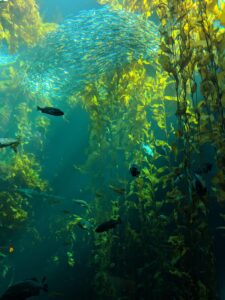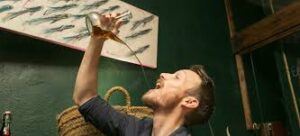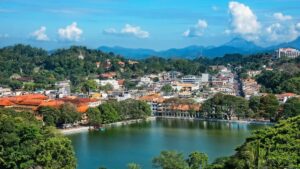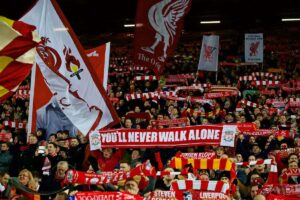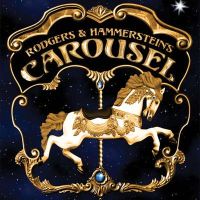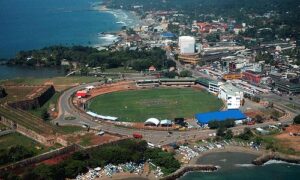The recent visit of the Prime Minister to Makassar in the Sulawesi, reminded us of the links of the Makassan traders with the northern Aboriginal people well before European discovery. It is a neglected area in the study of the cultural influence of these people. Thus, I thought it interesting to reproduce below a bark painting which I bought some years ago on Mornington Island in the Gulf of Carpentaria. You be the judge of the cultural influences at play in this painting.
In a tortuous vein
I had a pleasant surprise the other day. This is a lesson in clinging onto a view of what you think you know, and what is in fact reality. You may be dying, but you think tomorrow you will be better. I was reminded of the time leading up to the diagnosis of my underlying disease nine years ago. There was a delay in instituting therapy, and I was largely to blame – but not totally.
This time, my legs have been beset by increasing peripheral oedema, two swollen angry red calves and feet, compounded by the sub-fascial swelling on the soles of my feet.
Overnight, the swelling has always decreased, but the level of that reduction in oedema has slowed since the start of the pandemic because of weight increase and closure of hydrotherapy facilities. I dislike exercise especially if it is painful. Hydrotherapy provided a relief from the pain. My legs began to become more and more oedematous. Nobody offered the panacea I was looking for.
Over this period, there had been mention of vascular specialists and compression stockings but, as I now realise, I need for those who advise me to be assertive and not be ambivalent. The latter gives me an excuse for inaction.
I visit a plastic surgeon, who regularly checks me for skin lesions. I mentioned my legs; and once he saw how bad my legs apparently were, he said he had a vascular surgeon colleague whom I should see urgently.
Nearly ten years ago, it was an orthopaedic surgeon who looked at me, ordered tests, and by the next Monday, due to a fortuitous cancellation, I was able to see a consultant rheumatologist, who immediately confirmed the diagnosis the orthopaedic surgeon had considered, but which had been missed by a variety of other doctors. I might add I had seen another orthopaedic surgeon a week or so before and he offered to replace my knee joint almost immediately without any tests. That is the danger of being referred to a specialist, who may be technically brilliant but would have most certainly have ensured a very stormy post-operative passage for myself.
On this second occasion, it was a Thursday afternoon, and by Monday morning first thing, I had an appointment to see the vascular surgeon.
Now this vascular surgeon is young. He shares a clinic with three others. To the best of my knowledge he is not owned by an American hedge fund. He is actually into the business of helping people, not trading a commodity for financial gain.
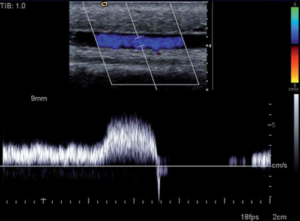
Under one roof, I had an ultrasound of my lower limbs’ vascular system, a consultation where the specialist did not expect to sit across a desk in a consulting room – inspected, interacted with the allied health professionals, recommended compression stockings. These and the applicator were on hand and my wife was taught the optimal way the stockings should be applied. As she said, looking at me meaningfully, she did read the instructions and watched the video in addition to the initial demonstration.
All in less than two hours – a one-stop shop. We had the compression stockings and the applicator.
Here was a local product where any Medicare benefits paid remained onshore, able to be reinvested. How different to those diagnostic imaging and pathology companies allegedly repatriating Medicare payments overseas.
Over 20 years ago, the Australia Institute in a discussion paper analysed the growth of corporate medicine foreshadowing the decline in standards as the profit motive became the prime driver in health care.
As the growth of corporate medicine grew so did Medicare become the ATM, not only for private entrepreneurs but also for the States, which were up to their filing cabinets in cost-shifting. As many of the purchasers were underwritten by overseas investors, the consequence increasingly will be that Medicare funding, which should remain in Australia, ends up in overseas tax havens.
The problem is that the medical profession has ceded control and hence independence to its corporate masters. As somebody who was involved in the various Inquiries in the regulation of the Medicare Benefits Schedule, I have always regretted that the AMA gave up this privilege, which meant that there was not any regular mechanism to alter the Medicare benefit, which was constantly misrepresented as a fee rather than a financial patient benefit the government provided for payment to the doctor.
During my time at the AMA, the discrepancy between the Medibank (then Medicare) benefit and the fee charged was symbolised by the AMA annual recommended list of medical fees. This was a guide, not an instruction by the AMA. Nevertheless, it maintained a relevance, which has only persisted after the introduction of gap insurance when the private health funds, initially prohibited, were able to re-enter the medical insurance market.
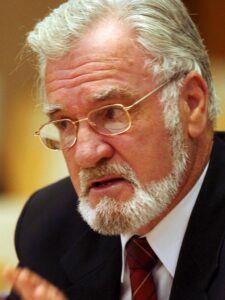
After 1984, when the AMA abandoned the regular fee for Medicare benefit Inquiries, it became a matter for every medical specialty to negotiate for themselves. The problem for some of the medical specialties was a function of what happened following the Nimmo Inquiry in 1969 into health insurance which was that benefit relativities were based on what were the fees charged by each specialty; and these relativities naturally created distortions in the market as technology made a number of items of service much cheaper to perform. In 1977 it was clear that technology advances with automaton replacing manual testing was enabling pathologists to make a bonanza from Medicare payments. This Inquiry into the Pathology Medibank Benefits was the first instance of government intervention into these relativities.
The AMA, through the Inquiries, had effectively maintained control over relativities. It provided a form of “flawed order” even though some of the Medicare benefits were well in excess of the underlying cost of the service while some other areas of the profession had done badly.
Thus, from an exercise where the AMA and the Government were in an edgy if not directly confrontational relationship, then there was none.
As I found out henceforth from the AMA relinquishing its position, it became a matter of having a good cost accountant to negotiate with government. With the growth of technology, while the value of the professional component of the medical service remained important, in some areas of the service there were both a substantial technical and a capital component. The “technical” component includes the cost of the scientists, the technicians, the allied health professionals including nurses required to provide services which were not medical, and “capital”, such as the cost of linear accelerators, MRI facilities and so forth.
Not all capital costs are covered. For instance, disposables were inherent in the delivery of the professional component, and not differentiated into any of the other Medicare benefit components. In fact, most of the cost of these has been borne by the hospital. Even now re-usable devices and prostheses lie outside the cost of the service.
Enter the world of the entrepreneurs, more interested in cash flows and profit rather than patient care. Some of the first were medical graduates, like the criminal, the late Geoffrey Edelsten, who gave the whole area a bad name; but it is the multinational companies that have moved behind a wall of cost accounting to dissect the Medicare schedule to exact the greatest profits, and in so doing, to enable Medicare funding to be sent to tax havens overseas.
Some may say how outrageous such a comment is; but the easiest way to deal with Medicare funding is to prohibit any profits that those companies who benefit in any way from exporting those profits.
This vascular surgeon, whose expertise spreads far wider that just advising on varicosities, demonstrated the one-stop shop advantages, which I frankly did not expect, and another fact – you don’t need to run late if you are a doctor. And you do not need to be a multinational corporation; his rooms were modern and located within a religious hospital. Good God, on second thoughts, located in a multinational corporation!
Such a thought in no way diminished my satisfaction with the service.
I, the Cryptosexton
I read about this complicated thing called Cryptocurrency. After riding the Algorithm Hobbyhorse around in my Virtual Nursery, I realised that cryptocurrency must be like a bit of barter behind the tog room at school. Hidden from the authority, a packet of Senior Service for two packets of brown Capstan; but not requiring the electrical power requirements of a small city to accompany the transaction.
But this cryptocurrency surely must be more complicated than that, and thus have more benefits.
Apart from plugging cryptocurrency into the cyptocharger, I decided to call it Tulipcoin. I was tempted to use “Lillionarcissus-coin”, which was the name for “tulip” before this Turkish corruption of a Persian word for “turban” was adopted. But that name was too long, would use too much power.
I thought by calling my cryptocurrency after such a famous flower, irrespective of the corruption implicit in the name, I would honour a previous occasion which may have arisen in a crypt.
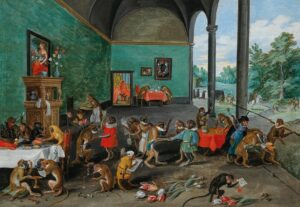
The whole saga of the tulip bubble was well expressed years ago in the 1999 book “Tulipomania”. The basic cause of the exorbitant prices which the tulip bulb reached in sixteenth century Netherlands was somewhat eccentric. A Flemish merchant found tulip bulbs in a cargo of cloth from Istanbul, thought they were onions, ate most of them and planted the rest.
The resultant blooms were overwhelmingly beautiful and attracted the eye of wealthy Dutch burghers.
The tulip is thus the most captivating of flowers, and like so many products of the Levant, this was the favourite flower of Süleyman the Great, who not only cultivated the wild variety but also initiated the science of breeding hybrids.
Thus when the tulips bloomed, the Dutch, who had the time and were a very wealthy nation due to their trade in the East (the Dutch had a monopoly on nutmeg for instance), were intoxicated by the flower; and the tulip became the signature of these prosperous people.
As was written in Tulipomania: “In 1633, the flowers served no economic purpose other than relieve the cold wet spring with petals that promised a change from the grey mist”.
Initially they were not only desirable but scarce. They attracted gardeners and the few connoisseurs, where scarcity was compounded by the search for perfection. At one stage when a skilled worker could expect 250 guilders in a year, a single tulip bulb was traded for over 5,000 guilders. A small basket was worth more than an Amsterdam mansion. It took three years for the bubble to burst, which it did in a spectacular fashion in 1637.
One of the reasons for this was that many of the tulips had been infected with a virus, which did not necessarily diminish the spectacular colours but certainly lessened the life of each infected bulb. What’s more by that time trading in bulbs had spread throughout the community into every tavern across the country. One of the supposed benefits of cryptocurrency is to be able to bypass “stodgy banks”. Just like being able to buy a cheap TV at the local pub. But here it was the tulip bulb.
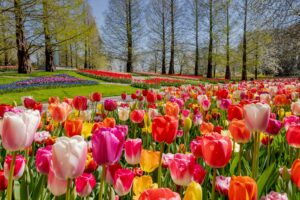 The value of the bulb during this hectic three period provided a way to extricate oneself from, if not poverty, at least to being able to afford a decent house -only if you sold early. However, given where many of the transactions took place as the author of Tulipomania wrote: “The trade was conducted for the most part in a haze of inebriation.”
The value of the bulb during this hectic three period provided a way to extricate oneself from, if not poverty, at least to being able to afford a decent house -only if you sold early. However, given where many of the transactions took place as the author of Tulipomania wrote: “The trade was conducted for the most part in a haze of inebriation.”
How appropriate! My Tulipcoin placed into such a market – drunk with power but where the mist has yet to lift?
Reprise
I wrote the following italicised in my blog on 15 January 2021 in a vain attempt to promote Craig Reucassel to stand against Falinski. My sentiments yet have been reflected in the deserved dumping of this Morrison sycophant, despite all the protestations. Subtly, my choice reveals my deep-seated prejudice, born of over 80 years in a male-dominant world. I suggested that a high-profile male with a formidable record in climate change and waste management should mount the challenge. I discounted the fact that he lived far away in the Sydney inner west.

I congratulate Dr Scamps (pronounced Scomps), who has been a high-achieving, very well qualified general practitioner who both lived and practised in the electorate, before successfully challenging Mr Falinski in the recent Federal election. My sense of his vulnerability was correct, but I got the gender of the new Member for MacKellar wrong.
I would suggest one of the New South Wales’ seats held by one of the Trump neophytes would be perfect for him, given that upending Abbott showed the way to do it. Maybe Falinski, whose seat is MacKellar, would be the way to go. Falinski is the typical Liberal Party hack toeing the party line.
As Falinski said in his maiden speech full of the pieties expected:
And so a politician is accountable to their community – I am accountable to you.

Wrong, he is beholden to his masters, never voted against any government. He has a voting record which would please Donald Trump – he should be vulnerable to somebody with the Reucassel values. I would love to see them debate why, for instance, Falinski has inter alia disagreed recently with the proposition:
“The Prime Minister to attend the House by 2 pm Tuesday 8 December to make a statement to advise the House whether Australia is speaking at the Climate Ambition Summit and table any correspondence with the summit organisers relating to whether Australia is speaking at the summit.”
This is but one example, but Falinski’s voting record is reprehensible to any person who is genuinely Liberal.
Reucassel is genuinely concerned with climate change and the world becoming a rubbish dump. He should be elected to Parliament to pursue this goal and hold the government to account. Falinski seems unwilling to do so. Is it Mitch* Falinski, or is that your second name?
*Mitch stands for that annoying Kentucky Senator, who pleads propriety but unquestionably has supported Trump. Dr Scamps reminded the electorate of the false nature of the so-called moderate Falinski’s voting record.
Janus was an EU Politician with the head of Boris Johnson
As an impotent observer of world affairs, I fret over the ambivalent attitudes of politicians over the fate of Ukraine. Angela Merkel defends her legacy in stalling the entry of Ukraine into NATO by saying that, at the time in 2008, the Ukraine was controlled by a pro-Soviet Government.
The root problem was that most governments wanted Zelensky to disappear into some hedonist exile, and he has proved to be very inconvenient. He wanted to defend the sovereignty of his nation. Suddenly, the Ukrainians had a leader, an uncompromising charismatic leader who, in a matter of 100 days, has differentiated a country from the neighbouring Russians. The ferocity with which the Ukrainians have responded to the Russian invasion contrasts with the bloodless coup where Russia took Crimea back from the Ukraine eight years ago, and have defined a country, which no matter the outcome will never again be just a “Little Russia”.
Zelensky has thus created that which most Ukrainians have always believed; and that is Ukraine as an independent nation. He has ensured this affirmation occurred in the full glare of the World spotlight.
Putin has been revealed as a primitive hominid intent on destroying the world’s energy and food supply as he dresses up as Peter the Great, an absurd travesty of the human condition.
The New York Review of Books provide a comparison of sorts in critiquing yet another book about Anne Frank. The contention is that if only the same courage epitomised by Zelensky had been on display during the time leading up to Anne Frank’s death in a Nazi concentration camp, she may have survived. As has been pointed out, because of the lack of any ongoing focus on Dutch Jews in particular, she was always in peril.

As part of the analysis, a harsh judgement was made about Queen Wilhelmina in that she failed to stand up to the Nazis and fled to Great Britain. She had maintained Dutch neutrality during WW1; but the only indication of her attitude to the plight of Jews was she insisted a Jewish refugee camp prior to WWII be moved further away from her summer palace than it was originally planned.
The American Government declined to give the Frank family a visa to travel to New York via Cuba in 1941. It provides an unsettling view of a country, with a quick trigger for invading non-European countries, and yet basically ambivalent against European aggressors. President Biden’s halting support of Ukraine could be the USA in early 1941. The Allies did not bomb the railway lines to Auschwitz. A matter of unimportance in the scheme of things!
Russia seemed to have infiltrated the top levels of government, politically, socially, financially, corruptly – a passage facilitated by Trump and scattered within the Conservative Party, those that worship the Infantis Johnson. However, there would not be a country in Europe where the malign Putin influence has not infiltrated.
As a result, maybe NATO could imprint the head of Janus as an emblem in acknowledgement of this influence given the way they have responded to the Russo-Ukrainian War.
Mouse Whisper
I was on a field visit when I heard a regional ABC reporter talking to a local farmer about the cost of a box of cauliflowers. He was selling them for $80 a box.
“What was the usual cost?” she asked.
“About $20 a box.”
“Oh, they’re double the cost then.”
Good to see the ABC is maintaining its standards.
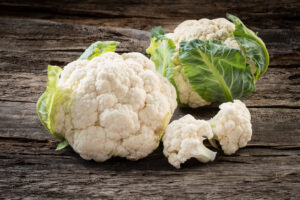

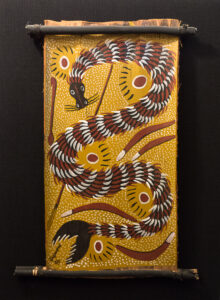
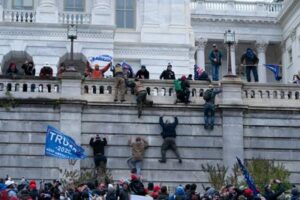
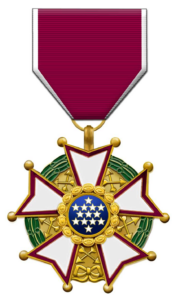 The award of the Legion of Merit should be returned by Morrison before it becomes his Millstone of Dishonour. I am sure the award will be noted by the incoming Biden administration, and as the charge sheet against Trump increases this year, comparisons between Morrison and the corruption which has flourished under his stewardship with his mentor, Trump should increasingly become front and centre of the political debate.
The award of the Legion of Merit should be returned by Morrison before it becomes his Millstone of Dishonour. I am sure the award will be noted by the incoming Biden administration, and as the charge sheet against Trump increases this year, comparisons between Morrison and the corruption which has flourished under his stewardship with his mentor, Trump should increasingly become front and centre of the political debate.
